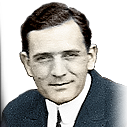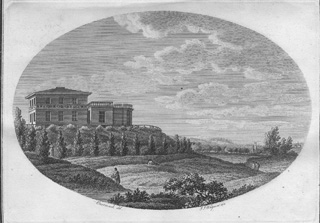Early on, I knew that I wanted to be an astronomer and knew that even if I became a second or third rate astronomer, it was the astronomy that mattered. Like me, Friedrich Bessel was destined to become an astronomer. One of his many early observational discoveries would provide the foundation for my own astronomical research hundreds of years later.
Königsberg Observatory: View of the observatory from the title page of Astronomische beobachtungen auf der Königlichen universitäts-sternwarte zu Königsberg.
Credit: University of Chicago Library
Friedrich Bessel was a mathematician and astronomer born in 1784 in Minden, Germany. He did not even finish school and was sent away to apprentice with a shipping business when he was only 14 years old. He found that he was very skilled in accounting, but really loved that he could travel so much as a part of the business. Travelling on ships would interest him in geography, languages, navigation, and astronomy. The night sky on the open ocean is an amazing sight to see! Because of the lack of light pollution and buildings on the horizon, it is the perfect place to study the stars.
As an amateur astronomer, he would write a paper refining the calculation of the orbit of Halley's comet, which gained the attention of astronomer Heinrich Olbers. Within two years, he left the shipping company and became an assistant at Lilienthal Observatory, where he worked to measure the precise positions of over 3,000 stars. He also studied Saturn and its moons; the asteroids Ceres, Juno and Vesta; atmospheric refraction and more. In 1809, he became the director of the new Königsberg Observatory in Prussia, as well as a professor of astronomy at Albertus University, even though he had never completed his basic schooling!


